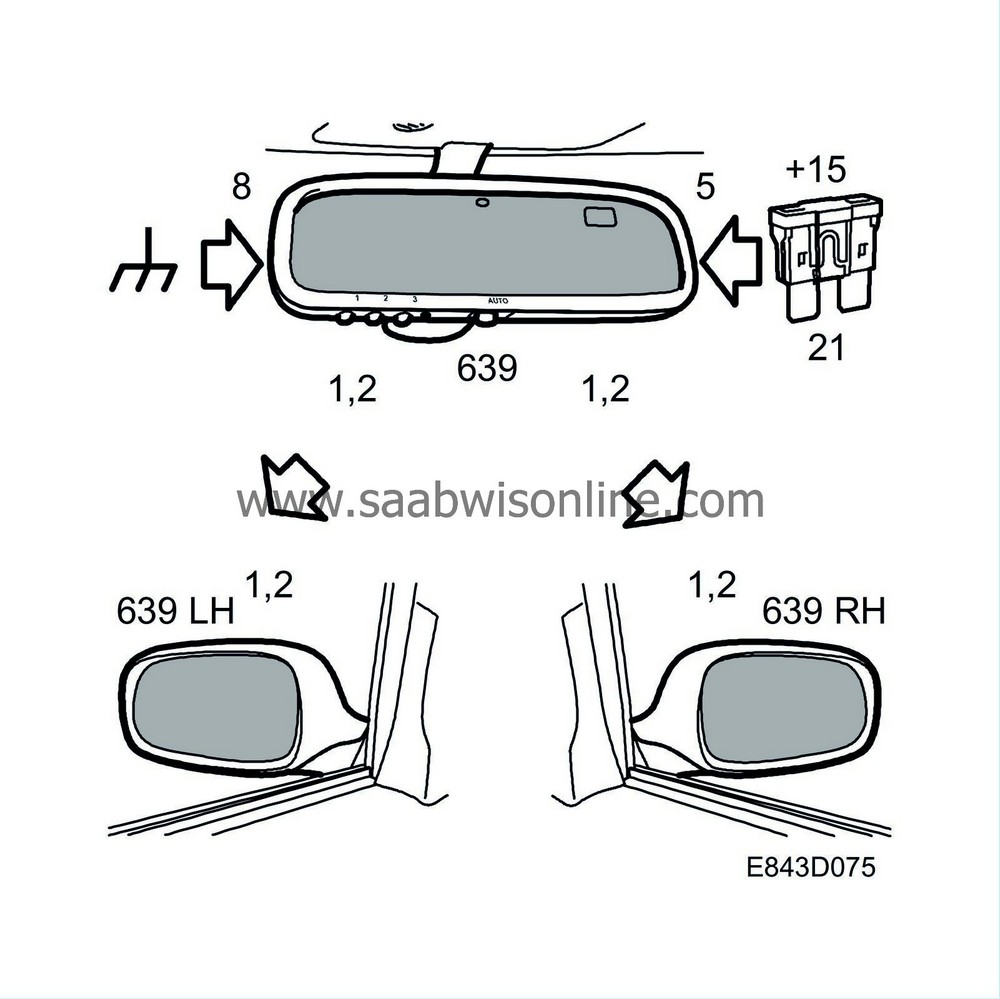Rear-view mirrors with automatic antidazzle function
| Rear-view mirrors with automatic antidazzle function |
The rear-view mirrors with automatic antidazzle function are automatically tinted down (darker) when the lights on the vehicle behind shine on the interior rear-view mirror. The mirror glasses comprise two layers of glass with a film in between as well as a mirror lamination on the inner layer. On both long sides of the glass is a contact strip which is fed current depending on the signals from the sensors, and the fluid tints down the mirror steplessly.
A control module with two integrated sensors is located in the interior rear-view mirror. One sensor is directed forward and measures the light from the front and one sensor is directed rearward and measures light from vehicles behind. The front sensor senses the light from the front and if it becomes dark outside the system is activated. The control module receives information from the sensors and compares the light which comes from the rear with the light from the front. When there is a risk of being dazzled from vehicles behind the glass is tinted down.


A low voltage is fed from the interior rear-view mirror's pins 1 and 2. Subsequently cables run to the connector H8-3 where they branch off to the right-hand and left-hand rear-view mirrors. The voltage varies between 0-1.5 V. The mirror glass is fully darkened with a voltage of approximately 1.5 V. With low temperatures the reaction of the mirrors is slightly slowed down.
A switch on the rear side of the mirror allows the function to be turned off manually. When reverse gear is engaged, the system is automatically turned off.
| Important | ||
|
The autodimming mirrors must not be supplied with a voltage greater than 1.5 V. A higher voltage can damage the mirrors. A standard 1.5 V battery can be used to diagnose/test the dimming function. |
||


